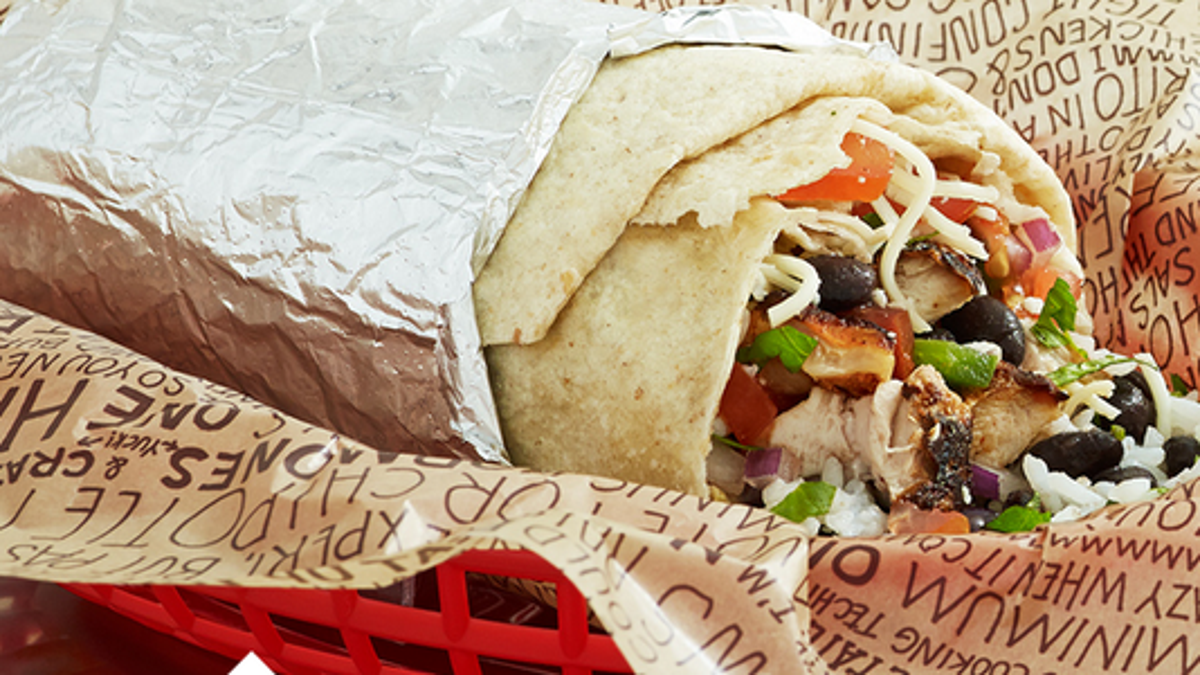
Chipotle's burritos will have even fewer ingredients. (Chipotle)
Chipotle may have eliminated all genetically modified ingredients from its menu but the Mexican fast food chain hasn’t finished purging the pantry of lesser-known ingredients.
The chain is currently in the process of revamping its tortilla recipe from 11 items (flour, water, whole-wheat flour, canola oil, salt, baking soda, wheat bran, fumaric acid, calcium propionate, sorbic acid and sodium metabisulfite) down to just four-- whole-wheat flour, water, oil and salt.
According to the New York Times, the chain uses over 800,000 tortillas to wrap its addictive burritos and soft tacos every day, and will likely need over a million by the time the new four-ingredient tortillas hit the market. Working with the Bread Lab at Washington State University, the goal is create “abuelita”--quality for the masses.
“We aspire to make artisanal tortillas on an industrial scale,” Chipotle CEO Steve Ells told the New York Times.
After Chipotle decided to purge all GMO ingredients from its lineup, Ells was surprised to learn that cornstarch—most of which comes from genetically modified corn—is used in most mass-market tortillas. Cornstarch, among other ingredients, helps extend the life of flour tortilla products.
“Not only did we need to change ingredients, we needed to get most of them out,” Ells said. “We also would have to go back to the tortilla bakery and really change the whole way tortillas are made en masse.”
To develop the new recipe, Chipotle is employing food scientists and bakers to find the perfect ratio of ingredients and is making the new tortillas from whole wheat rather than refined flour.
Doctoral student Bethany Econopouly has found a couple wheat varieties that work well for a tortilla and is evaluating about 100 more in the field to be harvested later this summer.
For a leavening agent, Chipotle had to move away from commercial yeast, eventually settling on a sourdough starter made from just flour and water, which will ultimately hope maintain shelf life and traditional flavor. The biggest challenge will be adopting these small batch recipes to larger production facilities where temperature and climate must be carefully controlled.
So how do the new tortillas taste? They are “golden brown with a slightly nutty taste and a bit of elasticity,” Ells told the New York Times. “As we prove that’s successful, we’ll expand until we’re supplying the whole region with tortillas, and then move on to the next region.”
